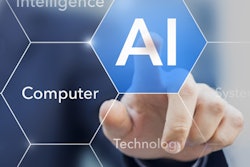
Offering new capabilities that may yield better diagnostic accuracy and lower workloads for radiologists, artificial intelligence (AI) is poised to succeed in breast imaging where traditional computer-aided detection (CAD) software failed, writes Prof. Michael Fuchsjäger of the Medical University of Graz in Austria in an editorial published online on 14 June in European Radiology.
More work still needs to be done to fully validate these algorithms and address important ethical and legal issues; however, AI will not only make the lives of radiologists easier, it will also help them generate further value in the new era of value-based radiology, he noted.
"At the end of the day, we have to assure that the right examination is performed at the right time for the right patient," he wrote. "We have a good reason to be excited about AI as another asset that will enhance our ability to provide the best possible care for our patients."
Failure of CAD
Although initial studies were encouraging, traditional CAD software hasn't shown over time that it improves overall accuracy -- or any other relevant measure -- in interpreting screening mammograms, according to Fuchsjäger.
 Prof. Michael Fuchsjäger from the Medical University of Graz in Austria.
Prof. Michael Fuchsjäger from the Medical University of Graz in Austria."Looking back, traditional CAD systems ultimately failed because they were feature-driven -- using patterns perceived by humans (density, heterogeneity, shape, margins) to determine the presence or absence of specific imaging features -- and therefore could not exceed the maximum accuracy of human breast imagers," he wrote.
However, recent research highlights the potential AI offers in breast imaging. For example, investigators led by Alejandro Rodriguez-Ruiz of Radboud University Medical Center in Nijmegen, the Netherlands, reported that the Transpara AI software (ScreenPoint Medical) could help breast radiologists achieve better diagnostic performance when used as a decision-support tool. What's more, they found in another study that the AI software could detect cancer on screening mammography as well as an average breast radiologist.
In an article published online on 14 April in European Radiology, Rodriguez-Ruiz and colleagues also reported that the AI system could lower radiologist workload by 47% if they only reviewed the studies within a certain range of cancer likelihood scores. Although this approach would have resulted in a 7% missed cancer rate, the authors concluded that those cancers might have been missed anyway by radiologists due to their low mammographic visibility, according to Fuchsjäger.
"This is a highly interesting approach that needs closer examination," Fuchsjäger wrote. "The algorithm could be used to reduce workload by excluding cases with a low probability of breast cancer from being read by radiologists at all. However, this very algorithm could also be used to select cases needing double reading versus cases needing single reading only; in this scenario, the workload reduction (of approximately 24%) would not be as dramatic, but a radiologist would read every single mammogram, which is one of the most critical aspects here."
Fuchsjäger noted, though, that the study was limited -- similar to other previous screening mammography AI studies -- by its retrospective design and reliance on a small, cancer-enriched sample.
Next steps
Before this type of automated strategy is adopted, patients will need to be consulted on whether they feel comfortable without a human reading low-probability mammography studies, according to Fuchsjäger.
"And even if they have absolute trust in AI correctly interpreting their mammograms, do we?" he wrote.
An evidence base of proper independent validation and large-scale prospective studies representing real-world screening scenarios is needed to adequately evaluate AI models, Fuchsjäger noted. In addition, AI algorithms should be developed to encompass other areas of breast imaging, including digital breast tomosynthesis, MRI, and automated 3D ultrasound.
Crucially, future research will also need to address the acceptability, as well as the ethical, social, and legal implications, of using AI in breast cancer screening services.
"Computers cannot be held accountable, but radiologists applying AI algorithms for reporting will be," he wrote.
Fuchsjäger believes, though, that AI offers new opportunities for improving breast imaging.
"Just imagine an algorithm identifying invasive breast cancers that will become clinically relevant only and omitting irrelevant ones from consideration," he wrote. "However, the fundamentals of clinical reality are unchanged; true success is defined by patient well-being and survival, not a better image quality or an improvement in statistical results alone."



















